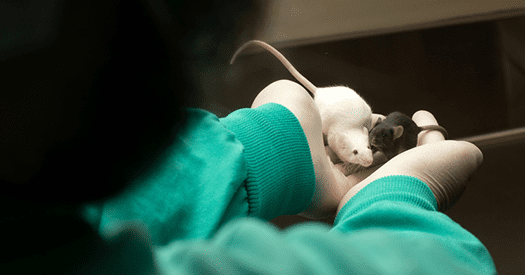
The term “Historic document published prior to January 20, 2025” is now prominently displayed on various websites of the U.S. National Institutes of Health (NIH) related to its longstanding policies on sex differences in research. This change may indicate a potential shift away from considering sex and gender in biological and health studies, a concern raised by several neuroscientists in their discussions with The Transmitter.
“I felt a sense of despair upon seeing that—I can’t fathom why there would be a desire to alter a policy that has evidently bolstered the integrity and reproducibility of basic science research,” shared Anne Murphy, a neuroscience professor at Georgia State University and a key member of the subcommittee that developed the original policy. She emphasized that discarding this policy would “regress our scientific understanding to outdated paradigms,” added Murphy.
The “Sex as a Biological Variable (SABV)” policy, introduced in 2016 by the NIH Office of Research on Women’s Health, mandates that researchers funded by the NIH must incorporate both male and female subjects in their vertebrate animal studies, or justify their reasons for not doing so.
The implications of the new labeling on compliance with the policy remain unclear, and no official communication has yet been made by the NIH regarding this matter. Jill Becker, a neuroscience professor at the University of Michigan, relayed that an NIH program officer indicated that if the application requests an SABV statement, it must be included in research proposals.
This change in labeling coincides with other significant shifts, such as recent actions by NIH officials reviewing grants for terminologies previously identified by the National Science Foundation, including terms like “female,” “gender,” and “women,” to ensure compliance with President Donald Trump’s January executive orders, which acknowledge only two genders and halt diversity, equity, and inclusion initiatives.
“It’s quite concerning to observe, especially in light of the broader trends we’ve seen,” noted Zoe McElligott, an associate professor of psychiatry at the University of North Carolina at Chapel Hill.
P
rior to the introduction of the SABV policy in 2016, many researchers—particularly in the field of neuroscience—often excluded female animals from studies to avoid variability in behavior and physiology tied to hormonal fluctuations during the estrus cycle. However, as Janine Austin Clayton, director of the Office of Research on Women’s Health, pointed out in 2018, “Without an understanding of how the sexes are similar and different, our scientific knowledge remains incomplete.” Both Clayton and her office did not respond to inquiries from The Transmitter regarding the updated label of the SABV policy.
Since the policy’s implementation, it has stimulated important research initiatives and findings in neuroscience, according to McElligott. For instance, her research indicates that neurotransmitter release affects alcohol consumption differently in male and female mice. Furthermore, other studies have uncovered differences across various brain regions, synaptic plasticity, and learning strategies. “Examining sex as a biological variable reveals a broader spectrum of biological possibilities and illustrates how biology functions,” McElligott elaborates.
The enforcement of this policy typically occurs within study sections where grant proposals are evaluated. “This is where we would likely witness any significant changes,” stated Margaret McCarthy, a professor of pharmacology at the University of Maryland.
However, many of these review meetings have been delayed or canceled since Trump’s presidency began, primarily due to the new administration’s restriction on NIH communications and an “indefinite hold” on submissions necessary for conducting these meetings, The Transmitter has reported. Until grant reviews resume or the NIH clarifies the status of the SABV policy, scientists—especially those focusing on sex differences—remain uncertain about its future.
Despite this uncertainty, Murphy remains hopeful that the nearly decade-long existence of the policy has significantly influenced neuroscientists’ perspectives on incorporating sex as a biological variable in their research. “If the policy were to be reversed, I trust that the scientific community will recognize its value and will continue to include both male and female subjects in their studies.”









